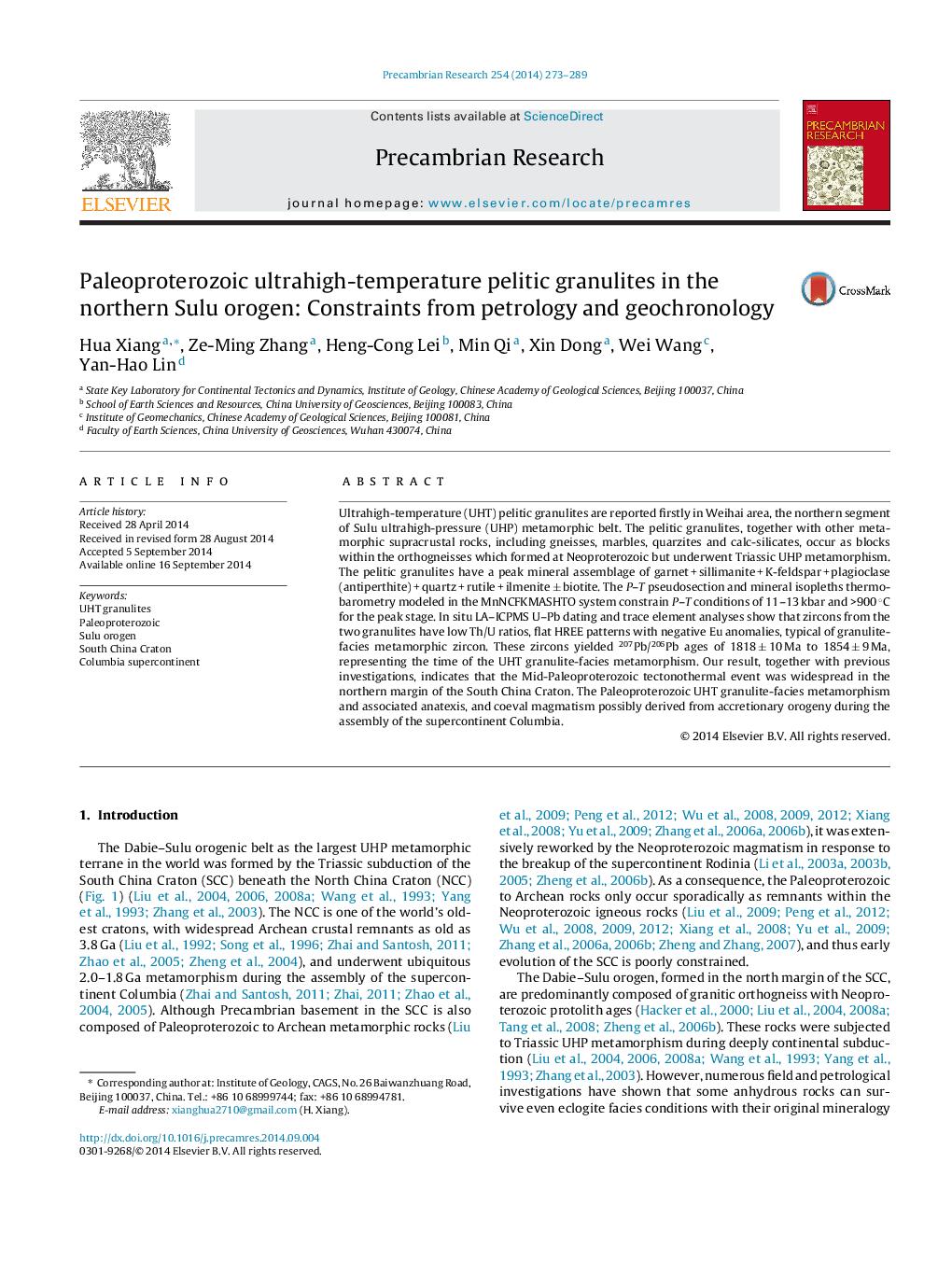| Article ID | Journal | Published Year | Pages | File Type |
|---|---|---|---|---|
| 4722878 | Precambrian Research | 2014 | 17 Pages |
•1.82–1.85 Ga pelitic granulites are reported firstly in the north Sulu UHP metamorphic belt.•These granulites underwent UHT metamorphism with peak P–T conditions of 11–13 kbar and >900 °C.•The UHT metamorphism possibly related to the assembly of the supercontinent Columbia.
Ultrahigh-temperature (UHT) pelitic granulites are reported firstly in Weihai area, the northern segment of Sulu ultrahigh-pressure (UHP) metamorphic belt. The pelitic granulites, together with other metamorphic supracrustal rocks, including gneisses, marbles, quarzites and calc-silicates, occur as blocks within the orthogneisses which formed at Neoproterozoic but underwent Triassic UHP metamorphism. The pelitic granulites have a peak mineral assemblage of garnet + sillimanite + K-feldspar + plagioclase (antiperthite) + quartz + rutile + ilmenite ± biotite. The P–T pseudosection and mineral isopleths thermobarometry modeled in the MnNCFKMASHTO system constrain P–T conditions of 11–13 kbar and >900 °C for the peak stage. In situ LA–ICPMS U–Pb dating and trace element analyses show that zircons from the two granulites have low Th/U ratios, flat HREE patterns with negative Eu anomalies, typical of granulite-facies metamorphic zircon. These zircons yielded 207Pb/206Pb ages of 1818 ± 10 Ma to 1854 ± 9 Ma, representing the time of the UHT granulite-facies metamorphism. Our result, together with previous investigations, indicates that the Mid-Paleoproterozoic tectonothermal event was widespread in the northern margin of the South China Craton. The Paleoproterozoic UHT granulite-facies metamorphism and associated anatexis, and coeval magmatism possibly derived from accretionary orogeny during the assembly of the supercontinent Columbia.
